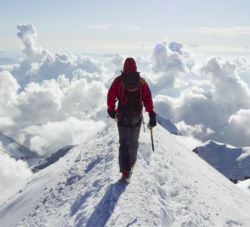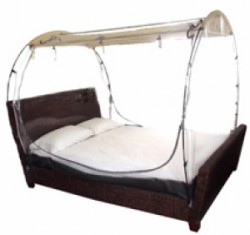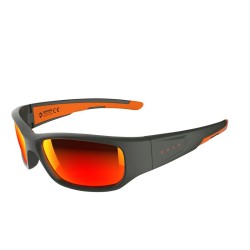
OK, so I have no experience and still want to get to the top of the Mont Blanc safely. Do I need a mountain guide then many people wonder. The answer to this is of course absolutely yes. You are not going to dive for sharks without the guidance of a highly trained diver. In mountaineering too, the intense experience of a beautiful climb can quickly give way to a drama. Fortunately I have a top mountain guide with Jelle to safely undertake this climb.
What is the chance that I will reach the Mont Blanc summit?
Climbing Mont Blanc without experience is therefore perfectly possible, but how big is the chance that I will reach the top? This largely depends on the following 3 pillars:
1. Condition
2. Material
3. Height acclimatization
1. Physical condition
For the Mont Blanc you have to have a good general condition, strong leg muscles and good abs. For most climbers, climbing the Mont Blanc means a constant physical exertion of 9 hours per day on average. The difference in height that you have to bridge that day in both positive and negative terms is around 1500 meters and all this above 3500m. It may be known, before climbing Mont Blanc you must have a strong physical condition. Experienced mountain guides advise as a ideal physical preparation a combination of strength training (especially abs and thigh muscles) and endurance by cycling.
2. Material
The packing list below is intended as a guideline:
- backpack for the mountains (40 liters)
- mountain shoes that have been run in: cramp-proof category D
- gamaschen
- spare laces
- thermal underwear, for example Odlo
- walking socks
- trekking pants, for example Mammut
- waterproof trousers (Gore-Tex or similar)
- warm fleece or cardigan
- jacket (breathable and waterproof, for example Gore-Tex)
- waterproof gloves
- cap
- cap as sun protection
- possibly a scarf as a sun protection
- camelback or thermos
- toilet bag
- quick-drying towel
- lip protection and sunscreen with high factor
- sunglasses (category> 3)
- main lamp with spare batteries
- sports tape
- garbage bags that can serve as dirty laundry bags or to sit on
- Energy and / or muesli bars
- travel pharmacy
- crampons
- pickel
- helmet
- telescopic walking sticks
- climbing belt
- aluminum rescue blanket
3. Height acclimatization
Climbing Mont Blanc can cause physical complaints due to the thin air at altitude. It is a combination of symptoms that occur when someone climbs too quickly to a higher altitude. This phenomenon is called altitude sickness and is the number one reason for not reaching the top.
Below is a table with per altitude the corresponding percentage of people who suffer from (light) altitude sickness.
You can significantly reduce the risk of altitude sickness by acclimatising your body to the altitude in an altitude tent in the month before your expedition.
How does it work?

Benefits of sleeping in the height tent
In the altitude tent, you sleep in an environment with less oxygen. Normally there is 20.9% of oxygen in the air. In a high altitude tent set at 2500m, the oxygen percentage is only 15.5%. Your body reacts to this by producing more red blood cells, among other things. The benefit of sleeping at altitude has been proven by scientific research. Mountaineers also have good experiences with renting an altitude tent before starting their expedition.
- More info? Then contact this mountain guide agency: Namaste Mountainguides




